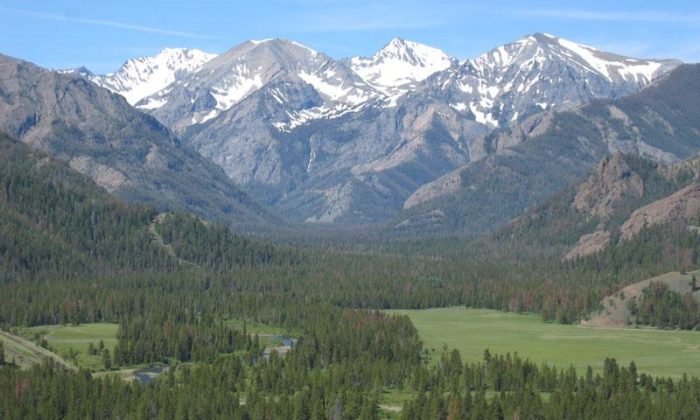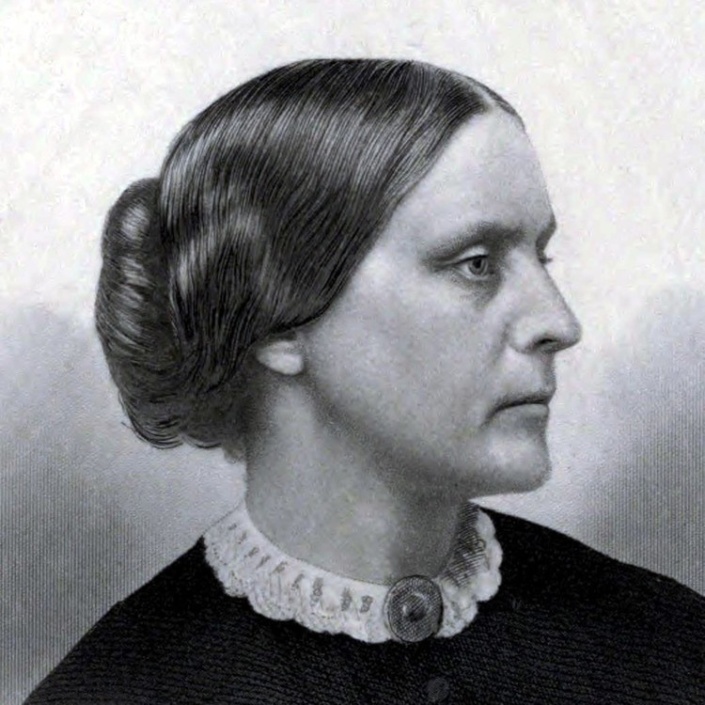1873
Flashback Friday: Shoshone National Park 1891

One-hundred, thirty-two years ago, today…
[The] Shoshone National Forest is the first federally protected National Forest in the United States and covers nearly 2,500,000 acres in the state of Wyoming. Originally a part of the Yellowstone Timberland Reserve, the forest is managed by the United States Forest Service and was created by an act of Congress, signed into law by U.S. President Benjamin Harrison in 1891. Native Americans have lived in the region for at least 10,000 years and when the region was first explored by European adventurers, forestlands were occupied by several different tribes. Never heavily settled or exploited, the forest has retained most of its wildness. Shoshone National Forest is a part of the Greater Yellowstone Ecosystem […].
The Absaroka and Beartooth Mountains are partly in the northern section of the forest. The Wind River Range is in the southern portion and contains Gannett Peak, the tallest mountain in Wyoming. [The] Continental Divide separates the forest from its neighbor Bridger-Teton National Forest to the west. The eastern boundary includes privately owned property, lands managed by the U.S. Bureau of Land Management and, the Wind River Indian Reservation, which belongs to the Shoshone and Arapahoe Indians. Custer National Forest along the Montana border is on the northern frontier. The Oregon Trail, the 19th century covered wagon route, passes just south of the forest, where broad and gentle South Pass allowed the migrants to bypass the rugged mountains to the north. The forest is home to the Grizzly bear, Cougar, Moose, tens of thousands of Elk as well as the largest herd of Bighorn sheep in the U.S.

[On] March 3 [of] 1891, Congress enacted, and [President] Harrison signed, the Land Revision Act of 1891. This legislation resulted from a bipartisan desire to initiate reclamation of surplus lands that had been, up to that point, granted from the public domain, for potential settlement or use by railroad syndicates.
The Act reversed previous policy initiatives, such as the Timber Culture Act of 1873, which did not preclude land fraud by wealthy individuals and corporations. The legacy of the General Revision Act of 1891 [Forest Reserve Act/Land Revision Act] is frequently credited as its serving as a catalyst to a series of federal land reform initiatives, notably under President Theodore Roosevelt.
Wikipedia Summaries
As a side note, when my father was a Freshman at N.C. State University in 1963-1964, he studied Forestry. Prior to his death on August 25, 2022, he still remembered most of the Latin terms for all trees and forest plants.
Additional:
♦ Shoshone National Forest (Wyoming State Parks)
♦ America’s First National Forest (Forest Service)
♦ Our First National Forest (National Park Service History)
Throwback Thursday: Susan B. Anthony’s Arrest 1872

Champion of temperance, abolition, the rights of labor and equal pay for equal work, Susan Brownell Anthony became one of the most visible leaders of the women’s suffrage movement. Along with Elizabeth Cady Stanton, she traveled around the country delivering speeches in favor of women’s suffrage.
[She] was born on February 15, 1820 in Adams, Massachusetts. Her father, Daniel, was a farmer and, later, a cotton mill owner and manager, […] raised as a Quaker. Her mother, Lucy, came from a family that fought in the American Revolution and served in the Massachusetts state government. From an early age, Anthony was inspired by the Quaker belief that everyone was equal under God. That idea guided her throughout her life.
National Women’s History Museum
Susan B. Anthony
Nancy Hayward
2018
On November 1, 1872, Susan B. Anthony and [three] other women attempted to register to vote in the U.S. presidential election. When registrars hesitated, Anthony overwhelmed them with legal arguments and the men relented. On Election Day, November 5, Anthony voted for Ulysses S. Grant. She was one of fifteen women from her Rochester ward to cast a ballot. Attempting to vote was actually a common tactic among suffrage activists. Anthony’s action commanded outsized attention because she and her colleagues actually voted.
Anthony was arrested on November 18, 1872, for violating the federal Enforcement Act of 1870 […].
Freethought Trail
The Arrest of Susan B. Anthony
Robert Green Ingersoll Memorial Committee

Nine days after the election, U.S. Commissioner William C. Storrs, an officer of the federal courts, issued warrants for the arrest of Anthony and the fourteen other women who voted in Rochester. Three days later […] a deputy federal marshal called on Anthony. He asked her to accompany him downtown to see the commissioner.
Anthony’s trial began in Canandaigua, New York, on June 17, 1873. Before pronouncing the sentence for her crime, Justice [Ward] Hunt asked Anthony if she had anything to say. She did. In the most famous speech in the history of the agitation for [women’s] suffrage, she condemned [the] proceeding that had “trampled under foot every vital principle of our government.” She had not received justice under “forms of law all made by men…” “…failing, even, to get a trial by a jury not of my peers.” Sentenced to pay a fine of $100 and the costs of the prosecution, she swore to “never pay a dollar of your unjust penalty.” Justice Hunt said Anthony would not be held in custody awaiting payment of her fine.
The Trial of Susan B. Anthony
Federal Judicial Center
Web Archive
May 31, 2010
A month after the trial, a deputy federal marshal was dispatched to collect Anthony’s fine. He reported that a careful search had failed to find any property that could be seized to pay the fine. The court took no further action.